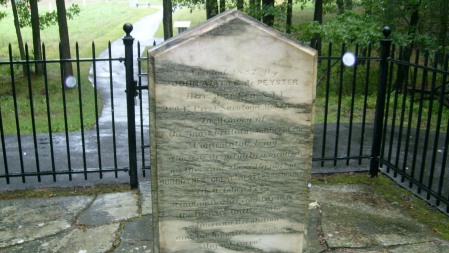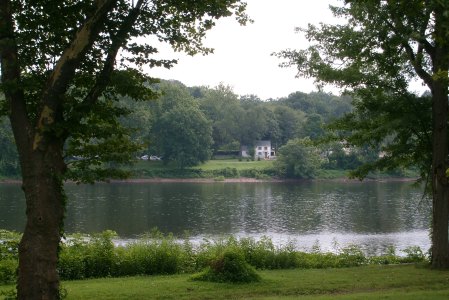Finding My Heritage at Historic Sites
The past few years, I have had the privilege of being able to visit a
variety of historic sites. I also have been researching my family
history, using the resources available through Ancestry.com (which I
also use for other historical research). Sometimes, the two interests
collide. This blog will look at two particular historic sites where my
ancestors actively participated in American history–two historic sites
that in many ways shaped the outcome of the War for Independence.
The first, Washington Crossing Historical Park in Bucks County,
Pennsylvania, is the site where General George Washington planned the
invasion of Trenton, New Jersey, on Christmas evening in 1776. The
Continental Congress had already moved west from Philadelphia in
anticipation of a potential British attack on the capital city.
Washington’s army had fled New York and marched across New Jersey
following the defeat at the Battle of Long Island and set up winter camp
on the western side of the Delaware River in Bucks County,
Pennsylvania. Enlistments were due to expire at the end of the year,
and Washington new that he needed a quick jolt to boost morale in the
Continental Army and encourage soldiers to reenlist for another year
(or, hopefully, for the duration of the conflict).
Using Durham boats piloted by members of
Colonel John Glover’s Marblehead regiment from Massachusetts,
Washington’s troops were ferried across the icy Delaware to the New
Jersey shore, and then they marched several hours before attacking
Trenton after dawn. Catching the Hessian troops by surprise,
Washington’s troops won the Battle of Trenton, continued to harass the
British troops in the region, and restored troop morale sufficiently
that kept the army fighting.

Replica
of Durham boats used in crossing. Troops sat on boat; horses and cannon
were transported on flat boats. Durham boats were primarily used to
ship iron from the Durham Iron Works to Philadelphia.
Each year, Washington’s Crossing of the Delaware is reenacted.
Unlike when my ancestor Jacob Griesemer participated, today an icy river
prevents an accurate recreation of the crossing, and instead the troops
walk across the bridge to New Jersey.

Bridge
connecting Washington’s Crossing to New Jersey. This bridge is
occasionally used during reenactments if the weather prevents crossing
the river in boats.
By the way, I can now say that I have walked from Pennsylvania to New Jersey.
The second historic site of the Revolution where one of my ancestors
fought was at Saratoga National Historical Park. This time, however,
instead of serving with Washington (who was busy with the Battles of
Brandywine and Germantown at the time), my ancestor was on the other
side. Kaspar Spahn (aka Casper Spohn) was a wagoner in the Princely
Hesse Hanau Artillery Regiment, and as such he worked with the caissons
in the Battles of Saratoga. His regiment was stationed at the Breymann
Redoubt, unsuccessfully defending against the American assault and
ultimately surrendering to the Continental Army. This location is also
significant because troops from Spohn’s regiment shot General Benedict
Arnold in the leg, and it was during his recuperation and military
governorship in Philadelphia in which he became acquainted with Major
John Andre through his wife Peggy Shippen, daughter of a Loyalist judge.

Reverse
side of boot monument. The monument honors the hero of Saratoga, whose
name is not mentioned on the monument. For some reason, they didn’t want
to mention Benedict Arnold.
The neatest part about visiting Saratoga, however, was finding out
from the Park Historian that the cannon and caisson in the Visitor
Center was from Spohn’s regiment and that in all likelihood he worked on
that cannon during the battle.
After Burgoyne surrendered his army, Spohn was taken prisoner,
ultimately spending the remainder of the war at the Hessian Camp in
Reading, Pennsylvania, and remaining in the United States following the
war. Several of the guards at Hessian camp were ancestors from another
family line.
To me–an historian of early American history–it has been quite
exciting to visit historic places where my ancestors walked, fought, and
camped during the American Revolution. I might not be descended from
anyone famous (well, at least not famous because of their service during
the Revolutionary War), but it definitely was a memorable experience to
be where my ancestors had lived during this extraordinary time.












